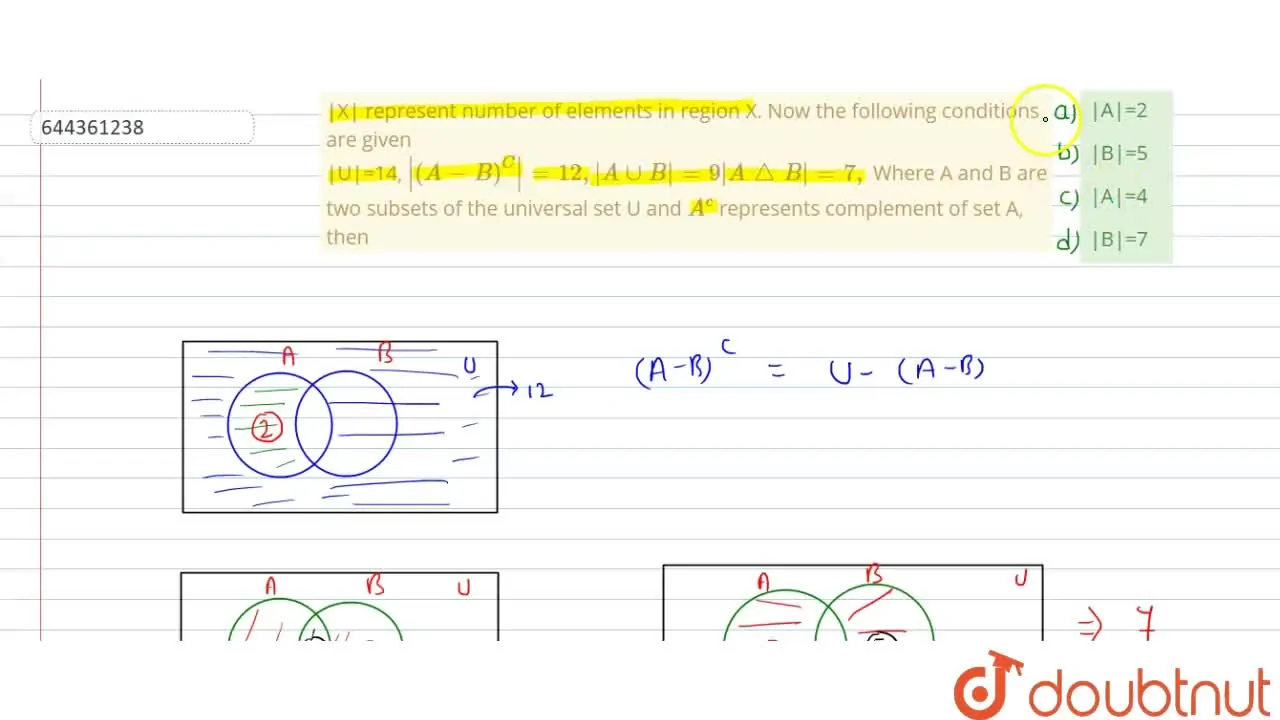|X| represent number of elements in region X. Now the following conditions are given
|U|=14, ∣∣(A−B)C∣∣=12,|A∪B|=9|A△B|=7, Where A and B are two subsets of the universal set U and Ac represents complement of set A, then
|A|=2
|B|=5
|A|=4
|B|=7
The correct Answer is:C, D
Step by step video & image solution for |X| represent number of elements in region X. Now the following conditions are given |U|=14, |(A-B)^(C)|=12, |A cup B|=9 |A triangle B|=7, Where A and B are two subsets of the universal set U and A^(c) represents complement of set A, then by Maths experts to help you in doubts & scoring excellent marks in Class 12 exams.
Related Playlists
- BOOK - AAKASH INSTITUTE ENGLISHCHAPTER - SETS EXERCISE - SECTION-D(Linked Comprehension Type Questions))3videos
SETS
- BOOK - AAKASH INSTITUTE ENGLISHCHAPTER - SETS EXERCISE - COMPREHENSION-II3videos
SETS
- BOOK - AAKASH INSTITUTE ENGLISHCHAPTER - SETS EXERCISE - SECTION-B(Objective Type Question(One option is correct))13videos
SETS
- BOOK - AAKASH INSTITUTE ENGLISHCHAPTER - SEQUENCES AND SERIES EXERCISE - Assignment (SECTION - J) Aakash Challengers11videos
SEQUENCES AND SERIES
- BOOK - AAKASH INSTITUTE ENGLISHCHAPTER - STATISTICSEXERCISE - Section-C Assertion-Reason15videos
STATISTICS
Similar Questions
If A and B be subsets of a set X. Then
View SolutionIf X and Y are two subsets of the unitversal set U and X' denotes the complement of X, then X∪(X∩Y) is equal to
View SolutionLet A and B be two sets in the same universal set. Then, A−B= A ∩B b. A'∩B c. A∩B' d. none of these
View SolutionLet A and B be two non empty subsets of set X such that A is not a subset of B, then:
View SolutionGiven n(U) = 20, n(A) = 12, n(B) = 9, n(A∩B) = 4, where U is the universal set, A and B are subsets of U, then n((A∪B)') equals
View SolutionFor two overlapping sets A and B, draw Venn-diagrams to represent the set
View SolutionLet U be the universal set and A∪B∪C=UThen[(A−B)∪(B−C)∪(C−A)]equals
View SolutionIf A,B and C are three sets such that A∩B=A∩CandA∪B=A∪C then
View SolutionFor any two sets of A and B, prove that: A′∪B=U⇒A⊂B
View SolutionLet U be the universal set and A∪B∪C=∪ then {(A−B)∪(B−C)∪(C−A)}' is equal to
View Solution


